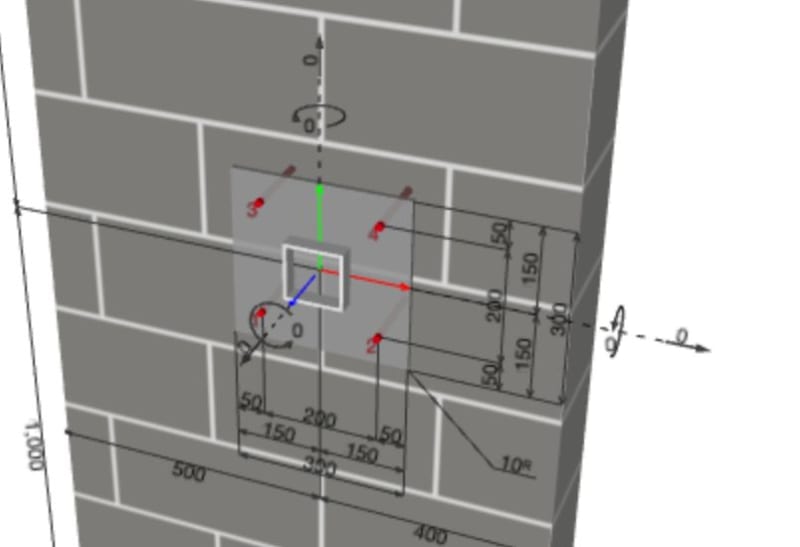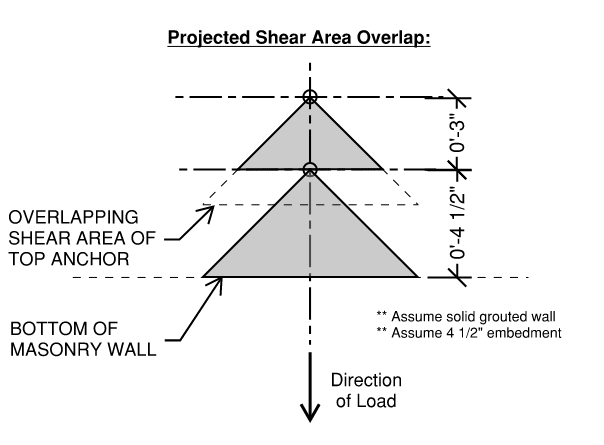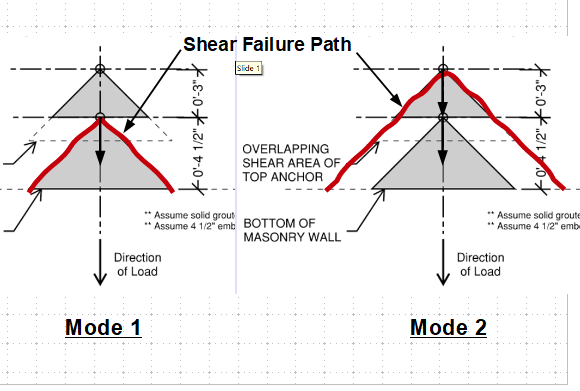Roukkia
Structural
- Mar 10, 2022
- 25
For a double row of anchors in a masonry wall I am trying to figure out for which failure modes it makes sense to split up the load into the two bolts to effectively double the capacity of my connection. For masonry shear breakout and masonry crushing I think it makes sense to apply the entire load to the bottom anchor because the top anchor will not have any capacity once the failure modes are reached. For shear pryout and steel shear I think it makes sense to divide the load into the 2 anchors because there is no overlapping area of influence therefore you will get the full capacity of each anchor independently. What are your thoughts on this?

![[ponder] [ponder] [ponder]](/data/assets/smilies/ponder.gif)


